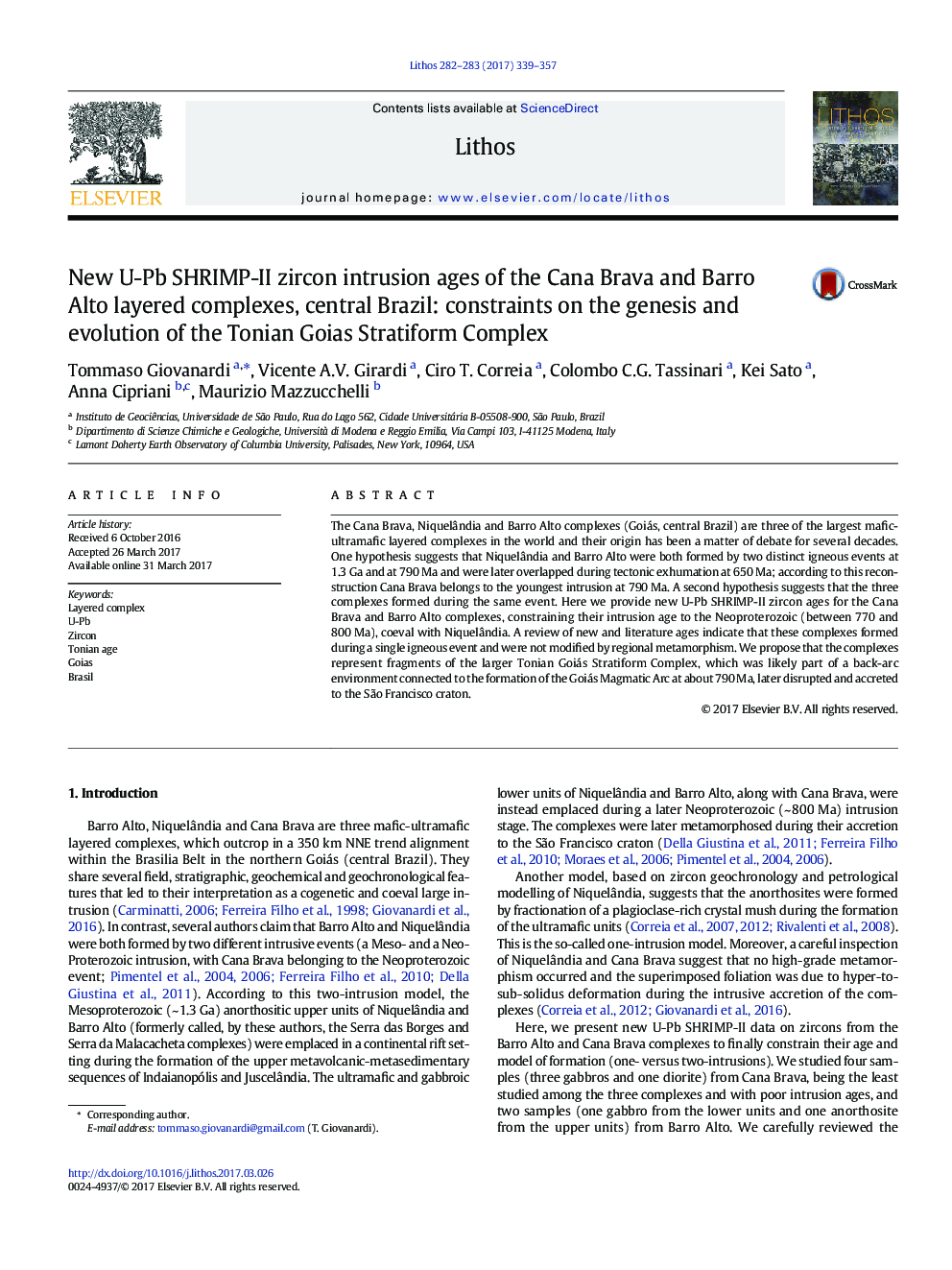| کد مقاله | کد نشریه | سال انتشار | مقاله انگلیسی | نسخه تمام متن |
|---|---|---|---|---|
| 5784138 | 1638631 | 2017 | 19 صفحه PDF | دانلود رایگان |

- The Goias layered mafic-ultramafic complexes intruded between 770 and 800Â Ma.
- The complexes are fragments of a larger complex, the Tonian Goias Stratiform Complex.
- The Tonian Goias Stratiform Complex intruded under shear conditions.
- The intrusion occurred in a back-arc setting related to the Goias Magmatic Arc.
- The Tonian Goias Stratiform Complex was disrupted during its exhumation at 600-650Â Ma.
The Cana Brava, Niquelândia and Barro Alto complexes (Goiás, central Brazil) are three of the largest mafic-ultramafic layered complexes in the world and their origin has been a matter of debate for several decades. One hypothesis suggests that Niquelândia and Barro Alto were both formed by two distinct igneous events at 1.3 Ga and at 790 Ma and were later overlapped during tectonic exhumation at 650 Ma; according to this reconstruction Cana Brava belongs to the youngest intrusion at 790 Ma. A second hypothesis suggests that the three complexes formed during the same event. Here we provide new U-Pb SHRIMP-II zircon ages for the Cana Brava and Barro Alto complexes, constraining their intrusion age to the Neoproterozoic (between 770 and 800 Ma), coeval with Niquelândia. A review of new and literature ages indicate that these complexes formed during a single igneous event and were not modified by regional metamorphism. We propose that the complexes represent fragments of the larger Tonian Goiás Stratiform Complex, which was likely part of a back-arc environment connected to the formation of the Goiás Magmatic Arc at about 790 Ma, later disrupted and accreted to the São Francisco craton.
Journal: Lithos - Volumes 282â283, June 2017, Pages 339-357